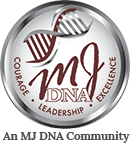What Are the Ways to Detect the Earliest Signs of Alzheimer’s Disease?
5.8 million Americans already have Alzheimer’s disease and that number is expected to reach nearly 14 million by 2050. This year alone, at least 500,000 Americans will be diagnosed with Alzheimer’s and that number will continue to skyrocket unless actions will be taken now.
For researchers, the early detection of Alzheimer’s disease gives way for prompt treatment through Alzheimer’s care facilities to give patients a better prognosis and quality of life. But how exactly can this dreaded disease be detected before it’s too late?
Brain Imaging
One of the cornerstones of early Alzheimer’s detection today is neuroimaging, which includes computed tomography (CT) scan and magnetic resonance imaging (MRI).
These scans offer an image showing the brain tissue’s volume, shape, and position to hopefully determine the earliest signs of Alzheimer’s disease.
The more advanced molecular imaging procedures are also now available to detect any changes or abnormalities within the cellular and chemical components of the brain. They include single-photon emission computed tomography (SPECT) and PET scans.
Biological Markers
Diagnosing Alzheimer’s disease these days relies on detecting signs and symptoms of mental decline, which happens only during the later stages of the disease when brain damage is already severe and the need to go to Alzheimer’s care facilities is already inevitable.
But experts are now looking into biological markers or “biomarkers” as one of the most promising ways to detect the presence of Alzheimer’s disease during its early stages.
A biomarker is similar to let’s say, fasting blood glucose, which at a certain level indicated diabetes. Several biomarkers are now being studied by researchers to help indicate the early stages of Alzheimer’s.
Beta-amyloid and tau levels in cerebrospinal fluid (CSF) together with brain changes seen in neuroimaging can indicate the presence of Alzheimer’s.
Although there are still no validated biomarkers for the disease, researchers are looking into several possible indicators including blood and urine tests, genetic risk profiling and proteins in CSF.
Mild Cognitive Impairment (MCI)
Over the last few years, researchers have found that individuals with MCI are at a higher risk of developing Alzheimer’s disease later in life. This is why research has been focused on the potential of using MCI as one of the determinants of early-stage Alzheimer’s.
Patients suffering from MCI may experience memory problems and other issues with mental function, but not all of them will progress to Alzheimer’s.
This is why researchers are trying to find ways to identify the potential of an MCI developing into Alzheimer’s disease through further testing.
Takeaway
An American develops Alzheimer’s disease every 65 seconds and more people are getting into Alzheimer’s care facilities to be given the proper care and guidance as they battle this disease.
With the aging population outnumbering the younger ones soon enough, they need to diagnose Alzheimer’s early has never been more crucial.
We can only hope that researchers will somehow find ways to help patients live a better life through early detection in the coming years.
Fallbrook Assisted Living is proud to offer its services to Fremont, NE, and surrounding areas and cities: Arlington, Cedar Bluffs, Ames Nickerson, Fontanelle, Arlington, Leshara, Colon, and Hooper




